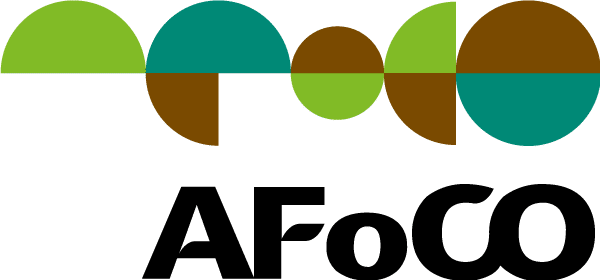This article presents the implemented activities from the research project, “Research on Forest Enrichment using High Valuable Native Species in Hoa Binh Province, Viet Nam (AFoCO/022/2021)” in Hoa Binh Province, Viet Nam. This two-year project is implemented under a collaboration between AFoCO, the National Institute of Forest Science (NIFoS) of the Republic of Korea, and the Forest Science Center of North-Eastern Viet Nam (FSNE).
Despite immense efforts to increase forest cover in recent years, natural forests in Viet Nam, including Hoa Binh province, are still being degraded, due to illegal logging, forest fire, free grazing, and conversion into other land use, among others. Unsuccessful forest rehabilitation is also an important contributing factor. Native species have been used for forest rehabilitation, including forest enrichment. Still, the survival rate and growth of these species, are generally low due to inadequate site-species matching and the application of unsuitable techniques. The province is also home to the largest hydroelectricity plant in Viet Nam, and hence, the degradation of natural forests threatens the stability of the water supply. There is a need for continued research on the application of forest enrichment with high-value native species as well as to identify suitable techniques and species for certain sites through experimental models.
This two-year project aimed to improve degraded natural forests in Hoa Binh province by applying appropriate forest enrichment measures using high-value native species, while improving the knowledge, skills, and livelihoods of local communities. The project conducted an assessment of the status of degraded natural forests, related policies, and forest enrichment models in the province and developed technical guidelines to enrich degraded natural forests using high-value native species. From June to August 2022, 2 hectares of forest enrichment model was established in Buoc Village, Khoe Commune, Mai Chau District, Hoa Binh Province, following the technical guidelines developed by the project.
At the project sites, four species were planted: Gioi xanh (Michelia mediocris Dandy), Re huong (Cinamomum iners), Cho chi (Parashorea Chinensis Wang Hsie) and Sen mat (Madhuca pasquieri). 500 seedlings aged between 8 to 15 months old were planted per hectare with a distance of 5 x 4 m.
Before the establishment of the enrichment model, a technical training on seedling production and enrichment techniques was held in Buoc village, Xam Khoe commune with the participation of 30 local people, who would participate in the model establishment. Learning through the exchange of experiences and hands-on practices, local people were able to improve their knowledge and skills in high-value seedling production and forest enrichment techniques. The trained local participants may develop their skills further to train other members of their communities in the future
Lesson Learned
Local communities should be key participants in training as well as planning and model establishment to ensure the success of the models. The COVID-19 pandemic hit Viet Nam seriously, including the project site and the project team could not travel and work in Hoa Binh province for some time due to travel restrictions. Maintaining strong communication with local partners and community stakeholders in the province helped to ensure the smooth implementation of the project and minimized delays brought about by the pandemic. The knowledge and lessons from the project will be applied throughout Hoa Binh province, the Northwest, and similar ecological zones of Viet Nam to promote natural forest rehabilitation.



Contributed by Dr. Bui Trong Thuy, Deputy Director of Forest Science Center of North-Eastern Viet Nam and Project Manager of AFoCO/022/2021

